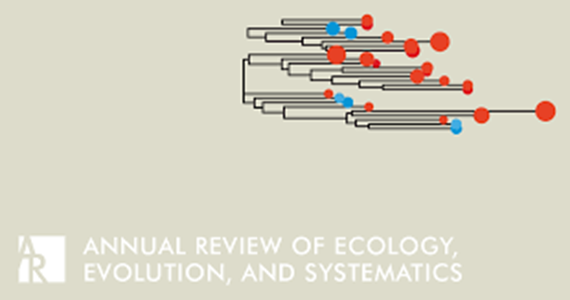重新审视落在溪流中的枯叶的命运
IF 11.2
1区 生物学
Q1 ECOLOGY
Annual Review of Ecology, Evolution, and Systematics
Pub Date : 2019-11-04
DOI:10.1146/annurev-ecolsys-110218-024755
引用次数: 93
摘要
陆生凋落叶在河流中分解时,其组成元素遵循多种途径。作为溶解有机物的碳可以被微生物迅速吸收,然后在转移到宏观食物网之前被呼吸。或者,这些碎屑碳可以被水生无脊椎动物吸收和吸收,因此它在溪流中保留的时间更长,并转移到更高的营养水平。微生物在凋落物上的生长可以通过三种途径影响无脊椎动物,这三种途径并不相互排斥。首先,微生物可以促进无脊椎动物的进食,通过调节树叶来提高食物质量,使它们更适合无脊椎动物。第二,微生物可以成为无脊椎动物的猎物。第三,微生物可以与无脊椎动物竞争束缚在凋落物中的资源,并可能产生阻碍碳和氮向无脊椎动物流动的化合物。随着垃圾被分解成更小的颗粒,其中的元素有很多机会重新进入河流食物网。在这里,我描述了一个概念框架,用于评估凋落叶的特征如何影响其在食物网和生态系统中的命运,这有助于预测全球变化将如何改变流入和流出河流的碳通量。本文章由计算机程序翻译,如有差异,请以英文原文为准。
Revisiting the Fates of Dead Leaves That Fall into Streams
As terrestrial leaf litter decomposes in rivers, its constituent elements follow multiple pathways. Carbon leached as dissolved organic matter can be quickly taken up by microbes, then respired before it can be transferred to the macroscopic food web. Alternatively, this detrital carbon can be ingested and assimilated by aquatic invertebrates, so it is retained longer in the stream and transferred to higher trophic levels. Microbial growth on litter can affect invertebrates through three pathways, which are not mutually exclusive. First, microbes can facilitate invertebrate feeding, improving food quality by conditioning leaves and making them more palatable for invertebrates. Second, microbes can be prey for invertebrates. Third, microbes can compete with invertebrates for resources bound within litter and may produce compounds that retard carbon and nitrogen fluxes to invertebrates. As litter is broken down into smaller particles, there are many opportunities for its elements to reenter the stream food web. Here, I describe a conceptual framework for evaluating how traits of leaf litter will affect its fate in food webs and ecosystems that is useful for predicting how global change will alter carbon fluxes into and out of streams.
求助全文
通过发布文献求助,成功后即可免费获取论文全文。
去求助
来源期刊
CiteScore
19.90
自引率
1.70%
发文量
21
期刊介绍:
The Annual Review of Ecology, Evolution, and Systematics is a scholarly publication that has been in circulation since 1970. It focuses on important advancements in the areas of ecology, evolutionary biology, and systematics, with relevance to all forms of life on Earth. The journal features essay reviews that encompass various topics such as phylogeny, speciation, molecular evolution, behavior, evolutionary physiology, population dynamics, ecosystem processes, and applications in invasion biology, conservation, and environmental management. Recently, the current volume of the journal transitioned from a subscription-based model to open access through the Annual Reviews' Subscribe to Open program. Consequently, all articles published in the current volume are now available under a CC BY license.

 求助内容:
求助内容: 应助结果提醒方式:
应助结果提醒方式:


